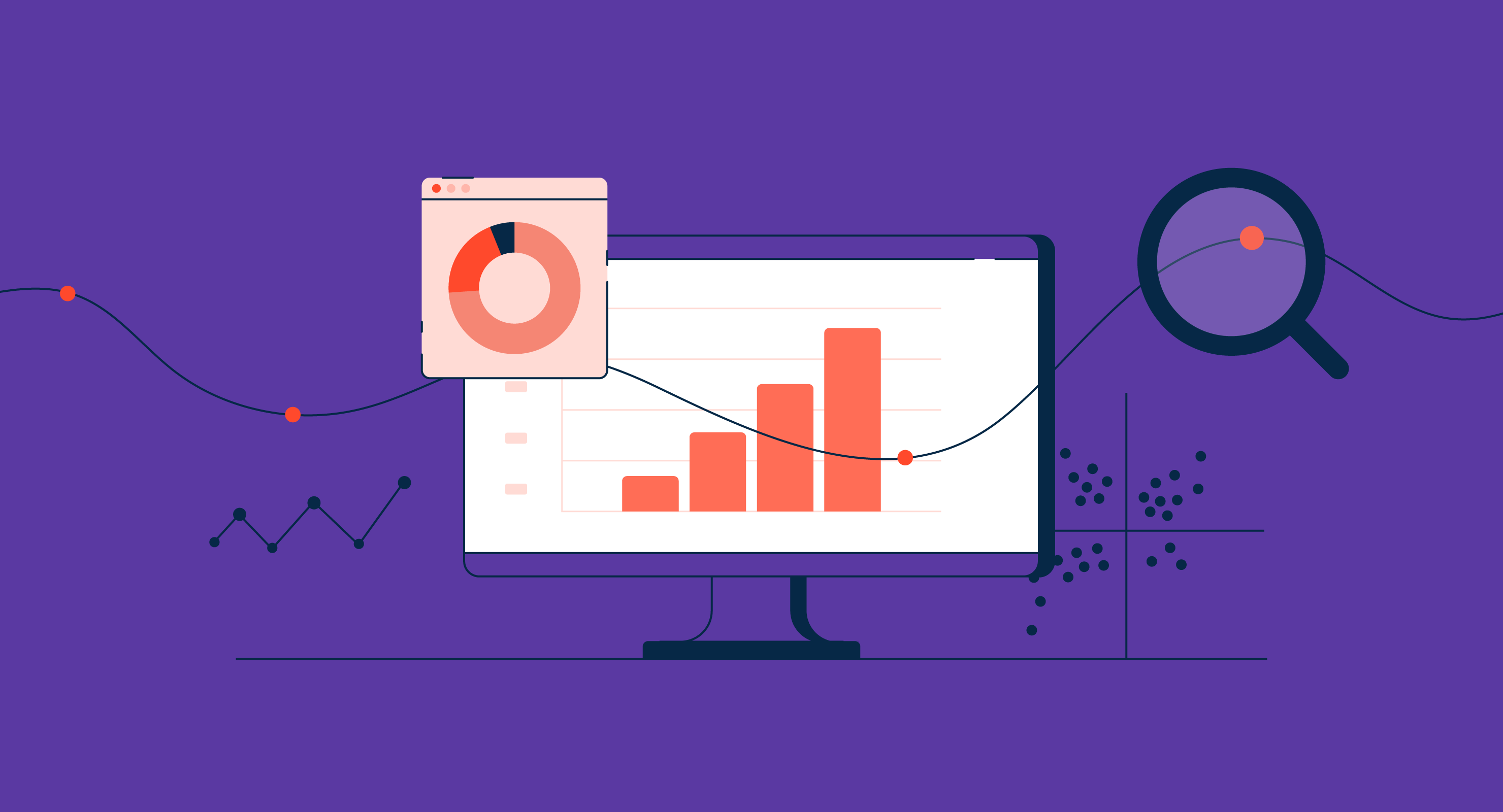What is goal setting?
Goal setting is the process of identifying and assessing goals that businesses want to achieve. It helps plan well-defined steps to formulate the specifics of each goal. The process makes selecting targets simple and clarifies the direction each goal should take. Setting goals plays an integral role in evaluating business performance. Businesses can establish timelines and define measurable outcomes to achieve short-and-long-term goals through goal-setting.
Companies use objectives and key results (OKR) software to monitor goals and track progress. Leveraging these technologies ensures accountability and successful goal setting.
Employee goal setting is a subset of business goal setting that focuses on setting clear, specific, and role-oriented goals for employees to work toward. Employee goals include personal growth, role enhancement, and resource allocations. Performance management software measures employee performance and goals during their time at the company to evaluate development and progress.
Importance of goal setting
Goal setting is essential to running a successful business. It provides clarity in target achievement, motivation to work toward goals, and a sense of direction. Having pre-defined goals encourages strategic thinking and skill-oriented planning, and provides more internal control over goal completion.
Goal setting ensures businesses are held accountable for their actions. It helps maintain responsibility toward outcome deliverability and acts as a guide to differentiate between achievable and unrealistic goals.
It also promotes action-oriented behavior and helps leaders to stay on schedule. This makes evaluating business performance and assessing metrics easy.
Types of goals
Business goals differ in aims, scope, and stakeholders involved. Goals may vary for each department and improve collaboration, internal motivation, and employee engagement.
Ensuring that each goal is clearly defined, descriptive, realistic, and measurable is an important part of goal setting.
Most business goals aim to achieve one or more of the following:
- Increase something, such as sales.
- Make something, like a new product.
- Improve something, such as employee engagement.
- Reduce something, like bounce rate.
- Save something, such as time and money.
- Time-based goals. These goals usually have a specific timeline for completion and are planned according to pre-decided deadlines. Depending on the timeframe, there can be two types of time-based goals.
-
Long-term goals represent the overall direction of a company or project. Long-term goals stretch over an extended period of time, like months or years, depending on goal importance and relevance.
An example of a long-term business goal is increasing company share in the market.
-
Short-term goals have a monthly or quarterly timeframe. They are measured regularly and impact the bigger, long-term goals.
An example of a short-term goal is creating a rewards program for employees. - Performance-based goals. Performance-based goals are short-term business and are attributed to a specific task or project. Clear definition and measurability are associated with performance-based projects.
- Quantitative and qualitative goals. Quantitative goals are based on numbers and statistics. These include goals such as website traffic and conversion numbers.
Qualitative goals are not based on numbers but are set qualitatively and impact the overall experience. Some examples of qualitative goals are customer satisfaction and product reviews.
- Outcome and process-oriented goals. Outcome goals are concrete and help achieve the desired result.
Process-oriented goals focus on the processes instead of results and ensure that the outcome goals are achieved. Teams can break down process goals into more tangible tasks.
How to set goals
Goal setting requires planning and preparation. It acts as a blueprint for achieving goals but looks different from business to business. However, companies must take certain steps, regardless of the goal type, to ensure successful implementation.
The primary purpose of understanding goals is to prioritize attention and organizational resources. Goal setting makes day-to-day tasks more accessible because it helps identify what tasks require the most focus.
The SMART framework
This is a mnemonic used to set goals. For each step in the goal-setting process, it’s helpful to answer some questions to understand how to approach goal completion.
Specific. The specificity of a goal is beneficial in understanding how much effort is required to complete it.
Some questions to answer when determining the goal particulars are:
- Who is accountable?
- What is to be accomplished?
- Why is this goal important?
Measurable. Tracking progress is key to effective goal setting. Assessing metrics and statuses ensures consistent focus and helps businesses stay on track with deadlines.
When dealing with measurable goals, ask these questions:
- How much increase/decrease in metrics?
- How many resources are required?
- When will the goal be marked as completed?
Actionable. Ideally, every business goal should be realistic and attainable. While goals often push the limits, they must always remain achievable.
Having actionable goals helps answer these questions:
- How realistic is the goal?
- Which factors will affect successful completion?
- What are the different ways in which the goal can be attained?
Relevant. One of the most critical steps in goal setting is knowing the relevance of the goal in question. Business goals are most impactful when they align and help move the people involved forward.
To understand the relevance of a goal, ask these questions:
- Is this goal worthwhile?
- Does this goal align with the other plans that are in place?
- Is this the right time and environment to strive to meet this goal?
Time-bound. Using timeframes and deadlines to track goal progression motivates and drives work toward them. Time-boundedness helps prevent everyday duties from taking over long-term goals and aids in retaining goal-based attention.
To navigate time-bound goals, answer questions like:
- What is the approximate completion time?
- When is goal tracking taking place?
- What are the time projections for the goal?
The OKR framework
This is another common goal-setting model.
-
Objectives form the “what” of every goal. These are the big, definable, and important steps required to achieve the greater goals.
An example of an objective is generating more leads. -
Key Results form the “how” of every goal. Every goal must have a key result or a clear metric that can be tracked to see progress and next steps.
An example of a key result is increasing and tracking marketing qualified leads (MQLs).
Tracking key performance indicators
KPIs are necessary metrics to track activity over time. They are essential factors in goal setting because they make it easy to understand goal succession and progress.
Every business has unique KPIs that may be tracked monthly, quarterly, or annually. Examples of KPIs include recurring revenue, customer satisfaction, and employee turnover.
Principles of goal setting
Attributing certain principles to goal setting will ensure the best results. There are five main principles of a successful goal-setting process.
- Commitment. This refers to the overall effort dedicated to accomplishing a goal. It measures the determination to pursue a goal and identifies the steps necessary to meet it.
- Clarity. Identifying and understanding the specificity of a goal is critical to goal setting. It’s challenging to prioritize different goals and see them through to completion without the right amount of information and transparency.
- Challenge. It’s easier to navigate goals when the goal’s difficulty is gauged first. Recognizing and addressing the challenges associated with every goal helps organizations prepare for blockers in goal attainment.
- Complexity. Every goal has particular demands that must be met to complete it. While goal setting, it’s vital to understand the complexity of each goal to structure them in order. This helps build a hierarchy and provides scope for prioritization.
- Feedback. Progress tracking is a core component of goal setting. Include regular feedback mechanisms and measurable actions to guarantee success.

Aayushi Sanghavi
Aayushi Sanghavi is a Campaign Coordinator at G2 for the Content and SEO teams at G2 and is exploring her interests in project management and process optimization. Previously, she has written for the Customer Service and Tech Verticals space. In her free time, she volunteers at animal shelters, dances, or attempts to learn a new language.





















